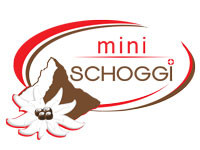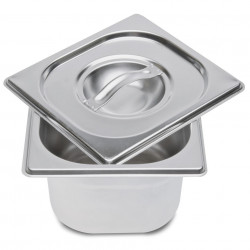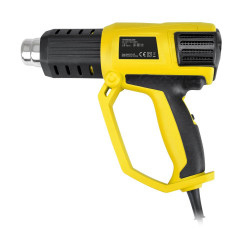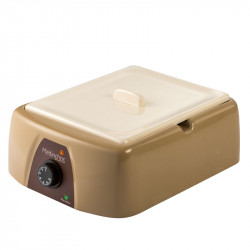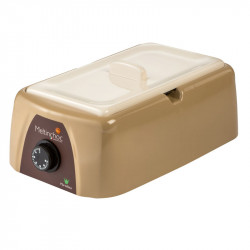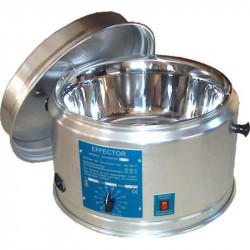-
MenuBack
-
Online Store
-
-
-
-
-
Leer
- Couverture
- Temperature control units
- Aids for chocolate
- Chocolate molds
- Praline fillings
- Chocolate ingredients
- Praline hollow body
- Chocolate colors
- Chocolate tattoos
- Chocolate packaging
- Bean to Bar
- Material for cutting chocolates
- Batons with Kirsch
- Airbrush for chocolate
- High Heels Accessories
- Textured films for chocolate
- Chocolate fountain & fondue
-
-
-
-
-
Kuchen & Torten
- Cakes Fillings & Ingredients
- Fondant & Marzipan
- Cakes tools
- Cake rings
- Silicone molds
- Baking pans for cakes
- Cake stand
- Cakes packaging
- Airbrush for cakes
- Sugar flowers accessories
- Cake Topper & Wedding Figurines
- Cakes dummies
-
-
-
-
-
-
-
-
-
-
-
-
-
-
-
-
-
-
-
-
-
-
-
Füllungen
- Baking chocolate
- Glucose & Sorbitol
- Cocoa beans
- Cocoa nibs
- Monin syrup
- Champagne & Alcohols
- Freeze dried fruits
- Cake & cake glaze
- Flours & baking ingredients
- Chocolate coating & chocolate
- Milk powder
- Granules
- Nuts & Nougat
- Fruit puree
- Creams & Fillings
- Egg yolk & egg white
- Fruit powder
- Special ingredients
- Fondant & Flower Paste
-
-
-
-
-
-
-
- Punching, cutting & embossing
- Mixing bowls & whisks
- Chocolate material
- Thermometer & Burner
- Gloves & Protective Material
- Smoothing & Modeling
- Roll out bar
- Dough scraper & horn
- (Flour) sieves
- Cake turntable
- Spatula & Spatula
- Silicone embossing molds
- Insert strips & cake slices
- Brushes & Tweezers
- Measuring cup
-
-
-
-
-
-
-
-
-
Ausstechformen
-
-
-
-
-
-
-
-
-
Courses
-
-
kurse
- Current courses
- Praline courses
- Chocolate courses
- Chocolate kiss course
- Macaron courses
- Cake courses
- Baking courses
- Patisserie courses
- Ice cream course
- Guetzli, Cookie & Confectionery Courses
- Bread courses
- Pasta courses
- Apéro course
- Cupcakes courses
- Éclair course
- Courses in Zurich - Adliswil
- Children's courses
-
-
- Team Events
- Hen Night
- Retail Store
-
About Us
-
-
-
DirectionsDownload relevant PDF now.
-
-
-
Recipes blog
-
-
Recipes Blog
-
-
-
Shipping and Payment
-
-
Versand/Zahlung/Impressum
-
-
- Online Shop
-
- Novelties
- Sale
- Chocolate and chocolates
- Couverture
- Temperature control units
- Aids for chocolate
- Chocolate molds
- Praline fillings
- Chocolate ingredients
- Praline hollow body
- Chocolate colors
- Chocolate tattoos
- Chocolate packaging
- Bean to Bar
- Material for cutting chocolates
- Batons with Kirsch
- Airbrush for chocolate
- High Heels Accessories
- Textured films for chocolate
- Chocolate fountain & fondue
- Couverture
- Gifts Cards
- Stencils & Stencils
- Cakes & Pies
- Ice cream
- Bread
- Macarons
- Hearty
- Recipe booklets & books
- Cupcakes
- Dessert
- Cake Pops
- Edible decorations
- Fillings & Ingredients
- Glucose & Sorbitol
- Cocoa beans
- Baking chocolate
- Cocoa nibs
- Monin syrup
- Champagne & Alcohols
- Freeze dried fruits
- Cake & cake glaze
- Milk powder
- Flours & baking ingredients
- Chocolate coating & chocolate
- Granules
- Nuts & Nougat
- Fruit puree
- Creams & Fillings
- Egg yolk & egg white
- Fruit powder
- Special ingredients
- Fondant & Flower Paste
- Food Colors
- Auxiliary means
- Spouts & piping bags
- Fondant, marzipan, flower paste
- Bakeware
- Aprons & Potholders
- Cookie cutters
- Season
- Candles
- Party accessories
- Tableware
Temperature control units
There are 12 products.
Active filters
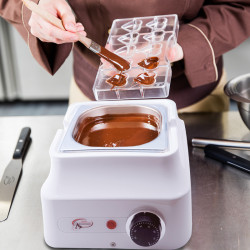
miniSchoggi tempering device for couverture and chocolate
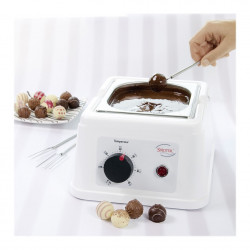
Städter tempering device for couverture and chocolate
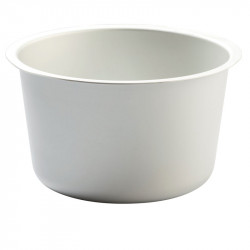
Additional container for temperature control unit round, 1.8 liters
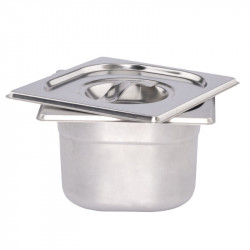
Additional container for miniSchoggi tempering unit
- Out-of-Stock
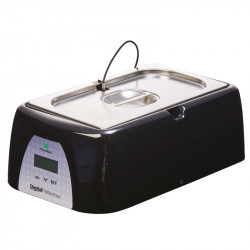
Temperature control unit digital, 3.6 liters, professional quality
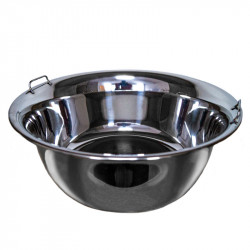
Additional container for temperature control unit round, 6 liters
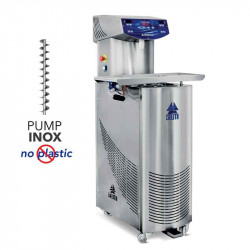
Selmi automatic professional tempering machine for chocolate
- Out-of-Stock
The temperature control unit
The good helper for home - the temperature control unit
We recommend the use of a tempering unit when processing chocolate and couverture. However, the frequency of use should also be considered. If a small quantity of tempered couverture is required only once or twice a year, for example at Christmas time, it is often not worthwhile to purchase your own tempering unit. For small quantities and infrequent use, it is therefore advisable to melt the couverture over a water bath.
However, if you want to process larger quantities several times a year, a temperature control unit is definitely worthwhile. The time saved by using a temperature control unit pays off quickly.
Nowadays, a wide range of different temperature control units can be used. Inexpensive, small household temperature control units are already available at a price of just under CHF 100. These are perfect for hobby use at home, as they are small, compact and inexpensive.
In addition, there are of course various more expensive temperature control units on the market that have different liter volumes. What you should always keep in mind with a temperature control unit is that the actual temperature control process is not done, but merely facilitated by obtaining the correct temperature. This means that with normal tempering units, the desired temperature (from 0 to 60 °C) can be set. The device melts the couverture to the desired temperature with 1 to 2 °C deviation. However, it does not assume optimum fat crystal formation. Therefore, it should not be expected that if the temperature control unit is set to 32 °C, the couverture will then be perfectly tempered and can be processed immediately. It is merely easier to maintain the desired temperature, which eliminates the need for constant reheating.
Automatic temperature control unit
The crème de la crème of temperature control units is of course a fully automatic temperature control unit!
This unit covers the entire tempering process, from melting the couverture at 45 °C, to cooling it down to 26 to 28 °C, to reheating it to the correct final temperature of 30 to 33 °C. The fully automatic tempering unit is not entirely inexpensive, but it saves a lot of time and always ensures shiny end products. Most pastry shops and confectioneries nowadays have such a device in operation for daily use.
Unfortunately, many confectioners unlearn correct tempering by hand through the use of these fully automatic tempering machines.
Advantages of a temperature control unit
Saves time because you do not have to be present during the melting of the couverture.
This can be done overnight, for example, so that chocolate production can start the next day.
The biggest advantage of a temperature control unit is certainly that you don't have to worry about the couverture getting too cold or too hot, because the temperature control unit maintains the desired temperature of the couverture. This also allows a lunch or coffee break during production without the couverture losing its correct temperature during this time.
Disadvantages of a temperature control unit
Prices for a temperature control unit start at CHF 95, so they are among the more expensive kitchen appliances, which nevertheless are often not in daily use.
The temperature control unit requires space both in use and in the cabinet.
Tips for melting couverture with a tempering device
The tempering unit melts the chocolate and couverture in a particularly gentle manner. This takes a lot of time. A tempering unit needs one to two hours to melt about 500 g of couverture. If a larger quantity of chocolate or couverture is to be melted, it is advisable to melt the couverture overnight in the tempering unit. Fortunately, the tempering units have a very low power consumption.
On the next two pages you can see which different temperature control units we offer in our store in Adliswil, as well as in our online store. Since each temperature control unit has different properties, you will get a quick and easy overview of the different temperature control units that we have in our range. Every person has different demands on the device, someone wants to produce chocolates only once in a while for Christmas, others want to produce chocolate bars for their own café every month. If you have any additional questions or uncertainties, please feel free to contact us at any time.
The sample - communication between couverture and man
Once the couverture is ready tempered, a sample should always be made before starting to produce. Make a sample by briefly dipping a spatula or small knife into the finished tempered couverture and allow to set/solidify for 5 to 10 minutes at room temperature. Then press well on the solidified couverture. If the sample shines, is completely firm and its fingerprint is clearly visible after pressing on it, your couverture is ready for further processing. From the sample, it is easy to see whether the couverture is correctly tempered or not. If you know how to read the sample correctly, you will also find any problems and have the opportunity to correct them.
A sample can be used to find out whether the couverture is too warm or too cold, whether the room temperature provides the optimum conditions for production or not. This is also where you can see if a nice sheen is produced or even if a gray haze or gray dots appear. The most important thing, of course, is to see whether the couverture tightens and becomes firm or whether it remains soft.
With the help of the sample, any problem can be identified and corrected. Many experienced confectioners who work with couverture every day also make a sample every time and use this additional safety when processing the couverture.
Work with chocolate
Do you love to make your own confectionery and fancy chocolates? Do you like to put together your own recipes for creative cakes and tarts? Then you certainly know how important it is to melt chocolate or couverture properly with a tempering device. The art is to keep them at the right temperature. It happens to many that the chocolate in the water bath takes a very long time until it becomes liquid. Sometimes water spills over and the few drops that can mix with the chocolate are already the end of a shiny glaze. Moving on, try melting the couverture directly in a small pot. Here, the risk of it burning is far too great. Above all, however, it becomes so much too hot.
Chocolate must be heated at low temperatures; it is very sensitive to heat. Optimum melting is particularly important for further processing in sweet treats or as decorations. If the liquid chocolate is returned to its original solid state, it must never have been too hot beforehand. If the chocolate was too hot, bonding will no longer take place and the chocolate will become brittle. A tempering unit ensures the optimum temperature and consistency.
Therefore, choose from our range the right heating device for your treats, depending on your needs. Couverture and chocolate are properly heated and melted with the high-quality professional tempering device. The professional device is suitable for larger quantities and is perfect for creating your own chocolate bars, pralines or chocolate bunnies. Those who do not make great demands on the tempering of their chocolate ingredients are well served with the standard variant, the infinitely variable temperature control is convenient. The round tempering device is available with a capacity of 1.8 liters in red, green or purple, which makes melting chocolate twice as much fun. The professional quality tempering unit is available in 3.5 and 6 liter versions.
